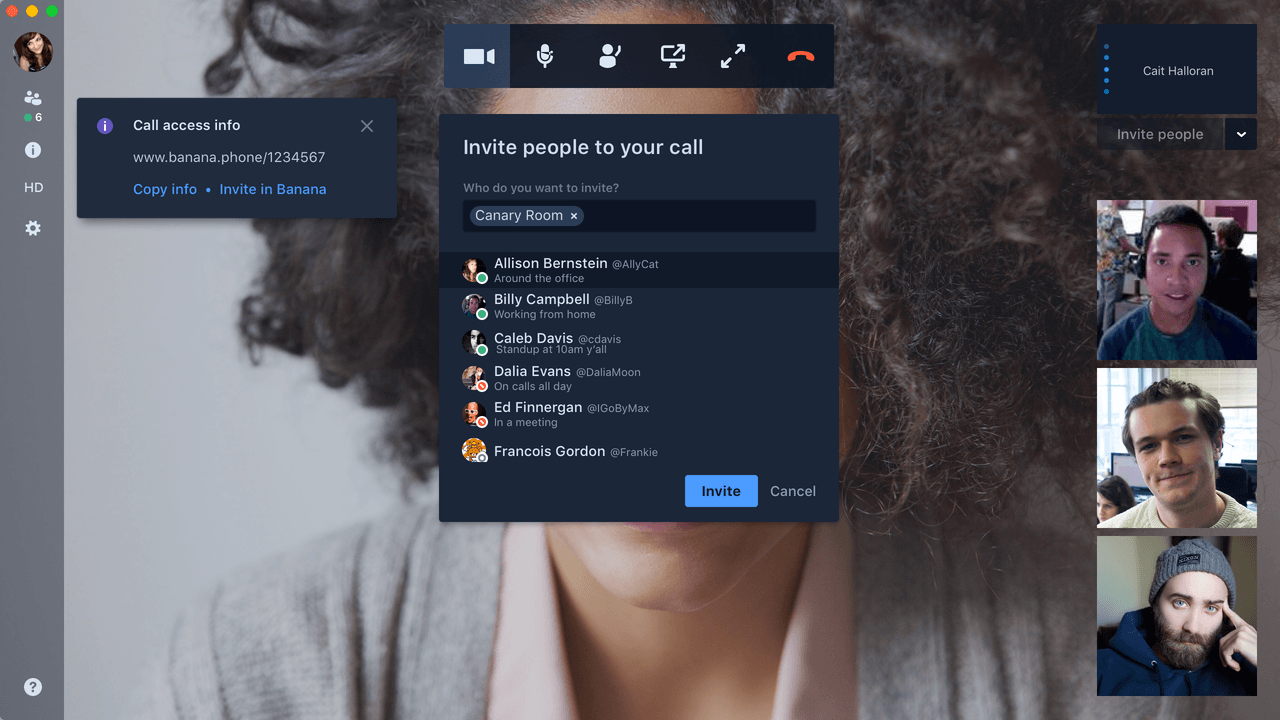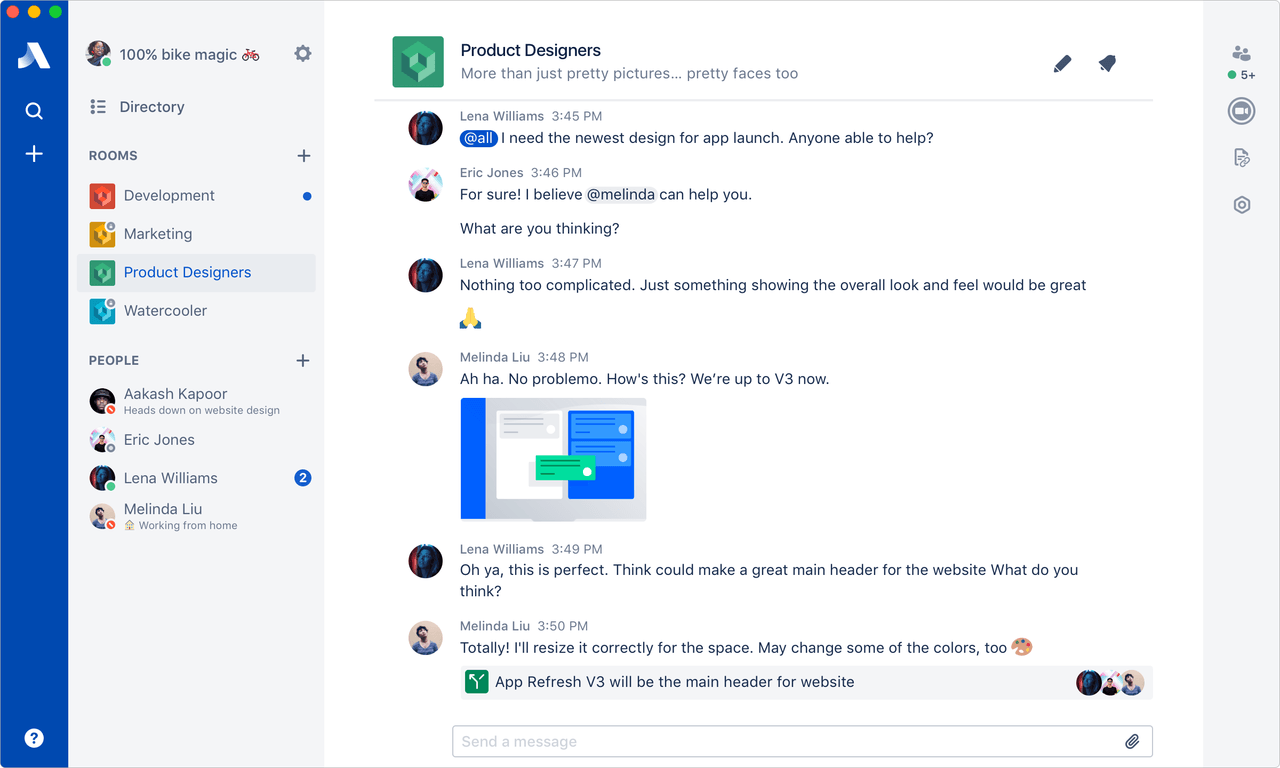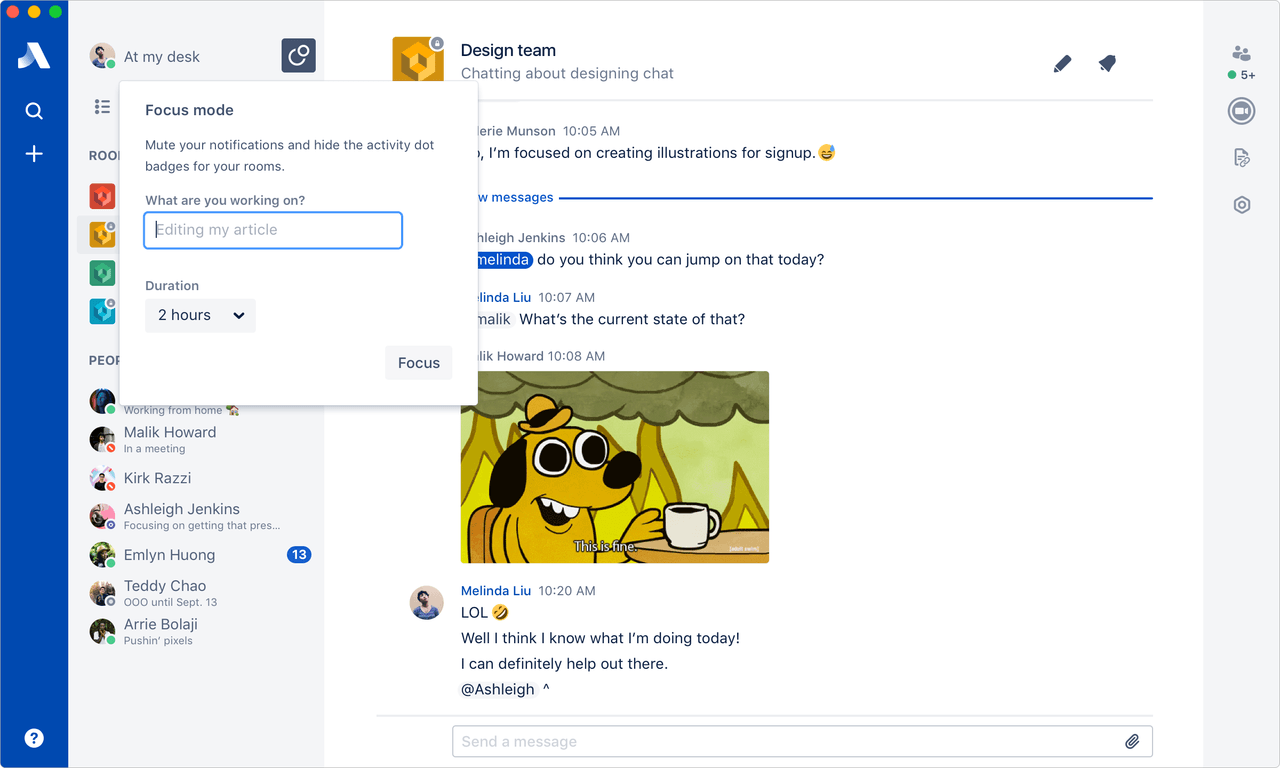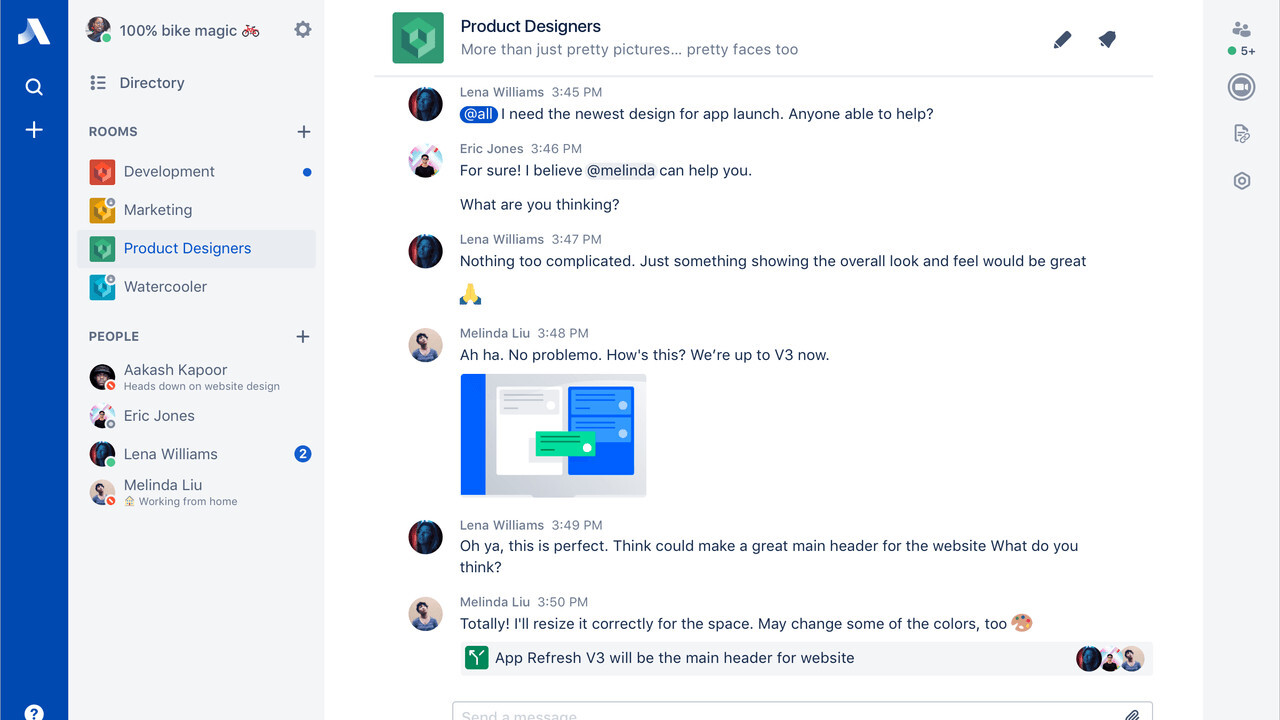
Atlassian today announced the launch of Stride – its new collaborative messaging platform that’s unashamedly designed to take on the current incumbent, Slack.
Stride works a lot like Slack. There are rooms, and you can have one-on-one conversations. Like Slack, it also comes with voice and video conversations, which you can join on mobile, desktop, and on the web, as well as via phone.
It also comes with some added extras that you won’t find within Slack. Within video calls, for example, users can reach-out and take control of other people’s computers, making it ideal for pair programming.
And unsurprisingly, given Atlassian’s pedigree for productivity software (like JIRA, Confluence, and most recently, Trello), it also comes baked-in with some project management tools. You can create and assign tasks, for example, using the same visual editor technology that powers its other project management tools.
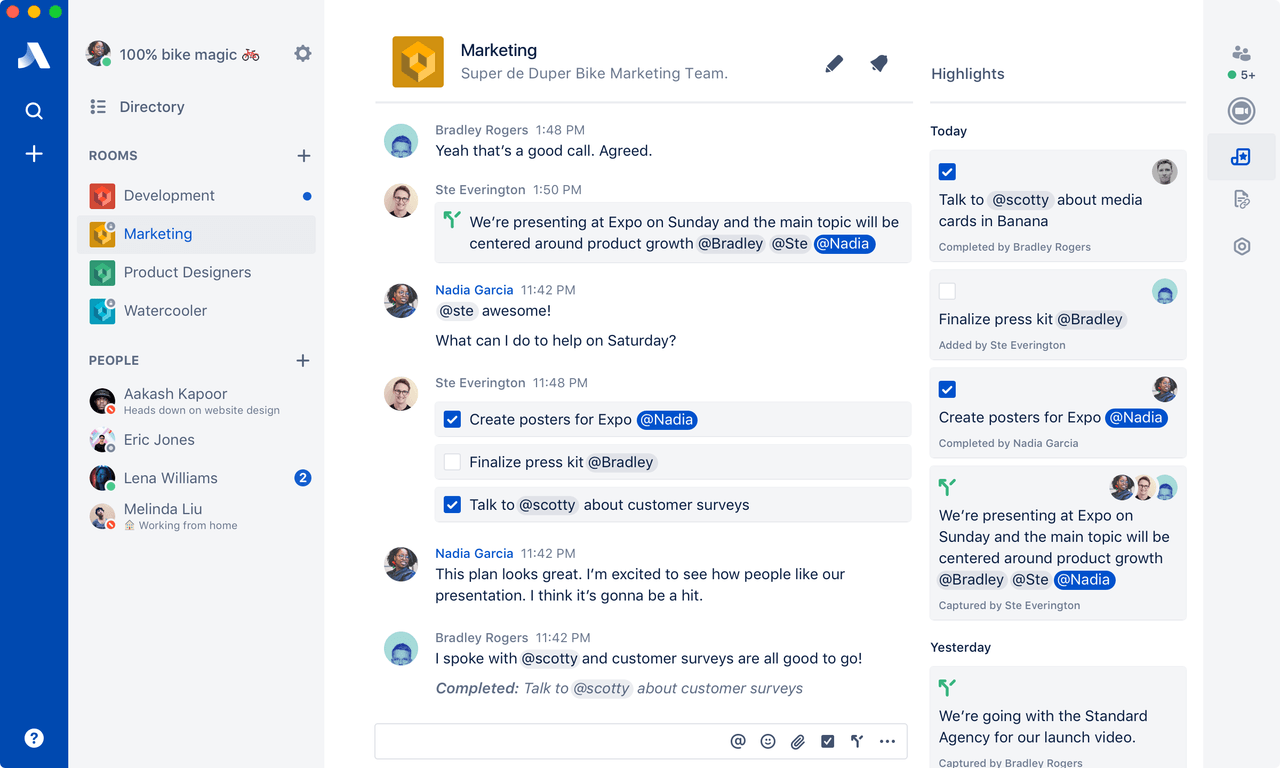
Steve Goldsmith, General Manager of Atlassian’s Hipchat, explained the rationale behind the product. “We built this to tackle three trends we saw within existing messaging apps,” he said.
The first was the distracting and fragmented messaging landscape. “There are too many channels, and too much noise for information workers. Too many notifications and products.” Goldsmith also explained that Stride wants to make it easier for people to actually engage in meetings, and once they’re finished, assign responsibility for tasks and follow-up.
Another interesting facet of Stride is that it’s built to maximise workers’ attention spans. It comes with a ‘focus mode,’ which is similar to Slack’s Do Not Disturb mode, insofar as it suppresses notifications for a set period of time.
The biggest difference is that, from what I saw, it allows you to more easily communicate what you’re working on, allows workers to automatically justify why they’re silent.
Unlike Slack, Stride lacks threads. This is intentional, as Atlassian Product Management Executive Oji Udezue explained that it wasn’t for a lack of trying, but the company feels that they “don’t solve problems, and are a bit of a distraction.”
This is something I can get behind. Threads are Slack’s weakest point. There’s a reason why they aren’t found in most messaging products. They just don’t work.
Users will also be able to extend Stride to their own requirements. It comes with an API (which Udezue described as “the best API I’ve ever designed at Atlassian”), along with a discoverable marketplace for extensions.
It’s clear that, with Stride, Atlassian is trying to reclaim the workplace messaging throne, which used to belong to its own product, Hipchat.
A huge part of that is pricing, which Uzeude described as “aggressively freemium.” Virtually everything about the product is available to those in the free tier, including unlimited rooms and users, grouo video chat, and API access.
There’s also a paid tier, which costs $3 per user, per month. This comes with some added extras that, while nice, probably won’t be necessary for most businesses.
It removes the limit (25,000 messages, plus 5GB worth of files) on the amount of messages and files stored (much like Slack does), as well as lets you dial in/out to meetings. It also lets you share control of your screen with other users.
Dislodging the four-year old Slack will be a hard slog, however, even for a company the size of Atlassian. It is starting by cannibalising existing Hipchat users. Those clinging to the older messaging product will be presented with the option to transfer their content and conversations to Stride, with pricing grandfathered for a year.
It’s worth noting that only applies to the cloud version of HipChat; the company plans to continue development on the the hosted version for the foreseeable future.
Without trying Stride, it’s hard to make a judgment call. First impressions, however, are really positive. The idea of being able to manage projects within workplace IM conversations is really appealing.
Similarly, a major bugbear I have with Slack video calls is that it’s hard to include someone who isn’t on your team, forcing you to use other products, like appear.in, Skype, and Pluot. The fact that Stride lets you easily create a dial-in number is really attractive.
It will be interesting to see how Stride takes off. Taking on Slack will be a huge challenge. It’s also worth mentioning that Atlassian isn’t the only firm with its hat in the ring.
Earlier this year, Microsoft launched Teams, while Facebook is currently trying to make a success of its business-oriented product, Workplace. Suffice to say, competition is stiff.
Stride is available from today. We’ll learn more about Atlassian’s plan for the product, as well as the older Stride, next week at the company’s annual conference in San Jose.
Get the TNW newsletter
Get the most important tech news in your inbox each week.
